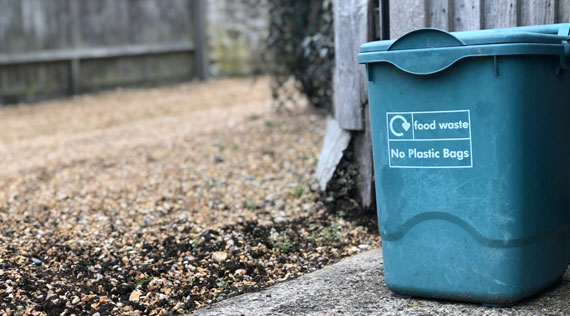Union County, NJ – Union County residents can put their kitchen scraps to good use this winter by starting a backyard compost pile. Compost is a natural, organic soil enhancer that helps flower beds, vegetable gardens and shrubs thrive without the need for extra fertilizer.
Keeping food scraps out of the waste stream helps ease the burden on municipal waste disposal operations. Pumpkins, decorative gourds and other plant-based home decorations can go into a compost pile along with kitchen scraps and yard waste.
“Union County residents got off to a great start in November by bringing more than five tons of pumpkins to our annual Jack o’ Lantern recycling event. Anyone who has access to a yard can help keep the momentum going by learning how to start a compost pile,” said Union County Commissioner Board Chairman Alexander Mirabella. “It’s a simple but effective way to help recover valuable organic nutrients from the waste stream and lighten the burden local waste disposal operations.”
There is a science to composting, but the basics are simple. Scraps from the kitchen are combined with leaves and other yard waste to form a pile. The pile creates a warm environment for naturally occurring microbes. The end result is humus, a crumbly organic matter that can be worked into soil to add nutrients.
Just about any kind of fruit and vegetable scraps can go into a compost pile, raw or cooked. That includes coffee grounds and filters, and tea in the bag (with staples removed, if any). Crushed egg shells are also recommended.
Jack O’ Lanterns, flower arrangements and other plant-based decorations can also be composted. Any non-plant accessories should be stripped off.
Some paper products can also go in, such as towels, napkins and plain cardboard. These should be ripped into strips to aid in decomposition.
Dairy products and cooked meats should also be left out of home compost piles, as they may attract pests. The experts categorically state that raw meat should never be composted at home, and the same for used kitty litter and other pet waste.
Nut shells, corn husks and other “woody” kitchen scraps can also be left out, because they take too long to decompose.
Backyard composters also need to be selective about yard waste. Weeds can go in, but not their seeds, or else more weeds will grow from the pile. Similarly, any plants that show signs of infestation or disease should be left out.
Winter composting can be a challenge due to the cold weather. Following a few simple steps can help keep the pile warm and active.
Start by saving fallen leaves in your yard. Leaves supply the carbon needed for composting, while food scraps provide the nitrogen.
- Place your pile where it will be sheltered from wind. Avoid a covered spot, because the pile will need rain to keep moist. A good location will also get sunlight to help keep the pile warm.
- Start by heaping up a large mound of leaves. Fluff them up instead of trying to compact them. The air spaces between the leaves will help insulate the pile. The extra air is also needed to help the decaying process.
- Make a hole in the middle of the pile. This is where your food scraps will go.
- To help the scraps decompose faster, chop larger pieces into smaller ones (pumpkins and other foods with hard rinds may need extra chopping).
- Each time food scraps are added, push some leaves from the sides of the pile over the top.
- Compost piles need some moisture. If it doesn’t rain for several days, or if cold weather freezes the top layer of leaves, add a bit of water along with the food scraps.
If needed, extra insulation can be added in several ways:
- Cover the pile with burlap or an old cloth tarp. The loose cloth will help lock in moisture while allowing rain to seep in.
- Keep the pile from spreading out by enclosing it in chicken wire or other fencing. Straw bales are ideal, as they also serve to insulate the pile.
- Before starting the pile, scoop a shallow pit of 1-2 feet into the ground. The earth will help keep the pile insulated.
A basic, “unscientific” compost pile will create humus in a matter of months, though it could take up to a year or more. Home composters can easily speed up the process to just a few weeks, by cultivating an ideal environment for microbial activity.
The factors for faster composting include using an optimal mixture of “green” and “brown” waste, such as two parts kitchen scraps and grass clippings to one part leaves.
Aerating the pile by turning it with a pitchfork once a week will also help. Store-bought compost tumblers are designed to accommodate aeration, but be wary of the possibility of freezing over the winter.
For additional guidance on home composting, visit the Rutgers New Jersey Agricultural Experiment Station online at njaes.rutgers.edu/fs811. Video instructions are also available at envirostewards.rutgers.edu/Earth-Day.html.
Union County’s Bureau of Recycling and Planning held the 2021 pumpkin recycling event at locations in Berkeley Heights, Elizabeth, and Westfield. During the weeklong event, Union County residents returned more than five tons of pumpkins, which were collected by the firm Waste Management for conversion to green energy.
For quick links to all environmental activities and programs in Union County, including the NJAES Rutgers Cooperative Extension of Union County, visit ucnj.org/green-connect.

